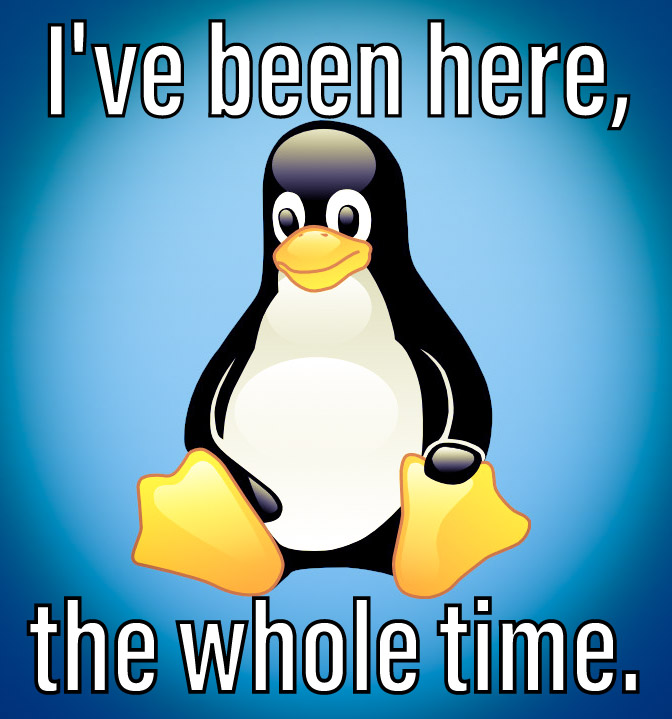cross-posted from: https://mbin.grits.dev/m/[email protected]/t/95555
Edit: Guys I didn’t write the headline; the subtitle that I added, I’ve now fixed tho
Edit: Also, the information about there being no escape is out of date – here’s a quick guide to how to fix the problem in the modern day

Well I wish someone had told me. I got my 1st Mac in 2020 after 30 years of windows .
Need a linux arm laptop asap I guess.
You could run Linux on the Mac, you know.
The builds for Arm are pretty limited last time I checked.
Didn’t you just say that
Need a linux arm laptop asap I guess.
Though?
Asahi Linux has matured extremely quickly for the M-series ARM Macs. Try it virtualized in a UTM vm if you wanna take a peek.
Is virtualized good enough for general use? I would want to test for a while before jumping, trying real usage.
Good enough to test drive the OS awhile and get a feel for their OS and desktop environment? Absolutely. Good enough to test their low-level device drivers on your Mac hardware? Not really. For that you’ll want to build a live-boot image on USB stick. Asahi was built expressly with the intent to run linux natively on apple silicon hardware though, so your chances are pretty good that everything should just work. Start with a vm though, see if you even like their environment. It should run pretty fast since it’ll just be virtualized on native hardware and not emulated.
Have fun!
You can probably find instructions to make a DIY laptop using a Raspberry Pi4 or similar. Nowhere as powerful as a M1, but Raspbian works fine
The Raspberry Pi is full of proprietary software and requires a custom kernel. I would choose a board that can run mainline
What one and what price?
Q: When did this start?
A: This has been happening since at least macOS Catalina (10.15.x, released 7 October 2019). This did not just start with yesterday’s release of Big Sur, it has been happening silently for at least a year. According to Jeff Johnson of Lap Cat Software, this started with macOS Mojave, which was released on 24 September 2018.
Hmm, now I’m wondering exactly which version of macOS my parents’ old, no-longer-supported iMac is running. I want to say it’s from… 2011, maybe?
(Next time I update/replace their computer – which may be imminent, as they’re complaining of screen brightness problems that sounds like the backlight failing – they’ll finally be switched to Linux, of course. I didn’t quite feel Linux was fire-and-forget enough for me remotely supporting computer-illiterate users back in 2011, but I think it is now.)
Which version of Linux? I’ve been trying things out and considering swapping but things still don’t seem as solid as macOS or Windows. Most recently I’ve been trying Ubuntu, which is almost there but not quite.
¯\_(ツ)_/¯ I dunno, last time I looked into running Linux on a Mac, Yellow Dog Linux (for POWER architecture) was still a thing.
At this point, since my parents’ Mac is an Intel machine, I assume it’ll work just fine with the normal Kubuntu I put on other desktops.
it’s not clear from the lemmy.ml post and the edits, but the blog post describing the behavior is from november of 2020 and the description of how to mitigate/block it is from february of 2021.
five days after the blog post in november of 2020 apple made a statement about deleting their ip logs, encrypting the communications and giving the option to disable these processes. those three actions seem to address everything in the blog post directly related to the complaint.
i haven’t had time to check definitively and see for myself on my own hardware and network yet, but the comment from the cross-post that “apple doesn’t seem to have been using their old servers for this” (paraphrasing mine) seems to be accurate at first blush looking at the house’s traffic logs.
Latest MacOS a 2011 can run is High Sierra (I’m pretty sure).





